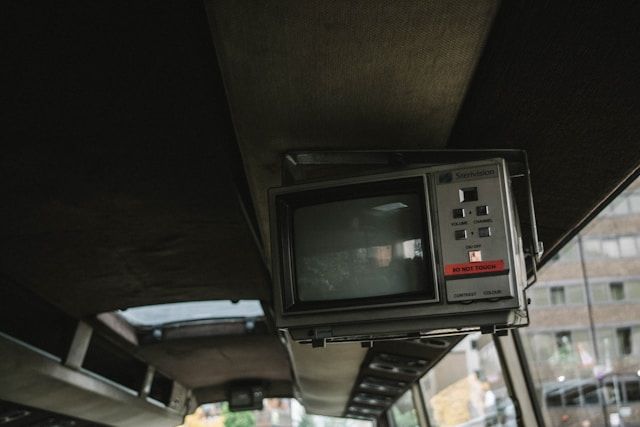Managing a compliant fleet in 2025 means more than keeping vehicles on the road. It involves strict oversight of driving hours, rest periods, and the data captured by tachographs. But collecting the data is only half the battle.
If transport managers want to avoid penalties and protect their operator’s licence, they need to stay on top of what that data is telling them every, single day.
That’s where tachograph analysis plays a critical role. It helps identify risks, correct issues before they escalate, and ensure you’re always ready for audits or inspections.
What Is Tachograph Analysis?
Tachograph analysis is the process of reviewing and interpreting the data recorded by digital or analogue tachographs in commercial vehicles. This data includes:
Driving time
Breaks and rest periods
Vehicle speed
Distance travelled
Driver ID and activity
The goal is to ensure drivers are operating within legal limits and that any breaches are flagged and addressed quickly. It also provides valuable insights into driver behaviour and vehicle use to help transport teams stay compliant and efficient.
For operators working under strict DVSA or RSA oversight, tachograph analysis is not optional. It’s a legal requirement that supports road safety and operator accountability.
Why Tachograph Analysis Matters in 2025
Enforcement is getting stricter. Regulatory bodies across the UK and Ireland are increasing checks, and non-compliance can lead to fines, O-licence penalties, and even prosecution.
In 2025, tachograph analysis is about more than just staying legal — it’s a vital part of protecting your business and your reputation. Missed rest breaks, over-driving, or incomplete records are being flagged faster than ever. That’s why accurate, up-to-date tachograph records are now essential.
But there’s another reason it matters: operational control.
By reviewing tachograph data regularly, operators can:
Identify driving patterns that risk compliance
Catch and correct mistakes early
See where routes or schedules are putting pressure on drivers
Improve communication and safety across the team
It gives management a clearer view of what’s happening day-to-day aswell as providing the confidence that nothing is being missed.
Common Challenges with Manual Tachograph Reviews
Many transport teams still rely on a mix of spreadsheets, paper logs, and basic downloads. This is the equivalent of playing a needlessly dangerous game.
Here are the most common problems:
Gaps in data – Missed downloads from driver cards or vehicle units can create blind spots that lead to penalties.
Human error – Manually reviewing records opens the door to mistakes. Even one missed infringement can have serious consequences.
Time pressures – Reviewing tachograph data line by line is time-consuming. Most managers already wear too many hats, and compliance checks can slip down the list.
No early warnings – Without automatic analysis, potential breaches go unnoticed until it’s too late.
Inconsistent practices – In multi-site operations, each depot may handle tachograph reviews differently, which increases the risk of oversight.
These issues increase risk, waste time, and make it harder to stay compliant as the rules evolve.
What Smart Tachograph Analysis Software Does Differently
Tachograph analysis software takes the pressure off transport teams by handling the heavy lifting behind the scenes.
Here’s how it supports day-to-day operations:
Automated Downloads
Software connects directly to driver cards and vehicle units, ensuring no data is missed and all files are captured on time.
Automatic Infringement Detection
It scans for breaches like insufficient rest, excessive driving time, or late downloads. Clear reports show exactly what needs attention.
Easy-to-Read Reports
Custom dashboards display hours worked, upcoming risks, and depot-wide trends — without needing to dig through spreadsheets.
Digital Recordkeeping
All data is stored securely online with full audit trails. No more chasing paperwork or worrying about missing files.
Alerts and Notifications
Get notified of missing downloads, upcoming deadlines, or unresolved issues — before they become a problem.
Instead of chasing down compliance, fleet managers can now see the full picture and act early.
What’s Changing in 2025
Compliance isn’t standing still. With new tachograph regulations rolling out across the UK and EU, staying up to date is becoming harder for busy transport teams.
In 2025, we’re seeing:
Greater scrutiny from enforcement bodies, including more roadside checks and audits
New digital enforcement tools, like remote download verification
Higher penalties for missed or inaccurate data
Tightened rules for international operations, especially post-Brexit
These shifts mean businesses relying on outdated or manual systems could face real risks — including O-licence challenges, fines, and driver bans.
This is where modern tachograph analysis software becomes essential. It’s not just a tool for staying organised. It’s a shield against compliance failures.
Choosing the Right Tachograph Analysis Software
Not all software is built the same. If you’re investing in a tachograph solution, here’s what to look for:
Ease of use
Your team shouldn’t need hours of training to get started. Look for a platform with a simple interface and clear dashboards.
Full integration
The best software connects seamlessly with your fleet maintenance tools, driver records, and compliance documentation, so everything is in one place.
Reliable reporting
You need clear, audit-ready data. Choose a solution that makes it easy to generate reports for management, drivers, and regulators.
Responsive support
If something goes wrong or you need help fast, a helpful, UK-based support team makes all the difference.
Built for Fleet Professionals Who Take Compliance Seriously
Fleet Fixation’s Tachograph Software was developed to make compliance easier — without cutting corners. It simplifies your analysis, keeps you audit-ready, and helps you avoid costly mistakes.
To see how it works in practice, book a free demo or explore our tachograph software page for more details.
To understand the specific legal limits and obligations for driving hours, check out our full guide on HGV Driving Hours and Working Time Directive.
